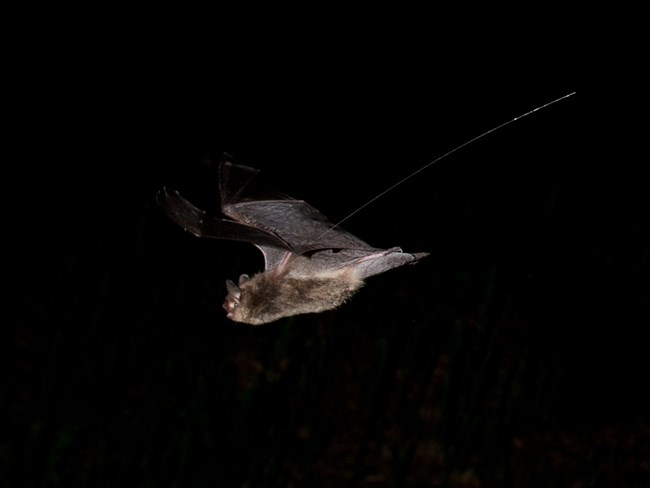Last updated: November 20, 2019
Article
Bat Population Monitoring in Shenandoah National Park

Image courtesy of Andrew Kniowski
Why is the park interested in bats?
Bats are an important part of ecosystems and food webs. Though some species of bats feed on fruit, seeds, or pollen, the species that live in Virginia are insectivores. They consume huge numbers of insects every night, filling a unique ecosystem role as nocturnal insect predators. Unfortunately, a new disease called white-nose syndrome is affecting bats across the United States. To better protect bats, biologists are studying how local bat populations are changing.
Research Highlights
- Recent monitoring detected nine species of bats in the park, including two federally threatened or endangered species.
- White nose-syndrome has greatly reduced the populations of some species.
- High-elevation areas, including rocky slopes, are important habitat for some rare species (e.g. eastern small-footed bats).
How do biologists study bats? What have they learned about bats in the park?
Biologists use a variety of techniques to study bats. Special nets (i.e. mist nets) are used to catch bats at key locations in the park. When bats are captured, biologists can identify the species, determine the age and reproductive status of the animal, and can examine individual bats for wing damage from the white-nose syndrome. Sometimes tiny radio-tracking devices are attached to bats and they can be followed to important habitats.Scientists also use acoustic detectors with special microphones to measure bat activity. Although bat activity in the park is relatively low, nine species have been documented (see graph below). White-nose sensitive species are rarely observed, but other species are believed to be widespread. The most commonly detected bat species was the big brown bat (Eptesicus fuscus). This is somewhat expected as big brown bats are not as sensitive to the disease as many other bats.

Northern long-eared bats (Myotis septentrionalis) and Indiana bats (Myotis sodalis) are very sensitive to white-nose syndrome and are both protected by the Endangered Species Act. At Shenandoah, these species were detected at relatively low levels in 2016 and 2017. In the Northeast, northern long-eared bats have declined by more than 90% due to the disease.
In 2015, biologists captured a pregnant northern long-eared bat near Rapidan Camp. This exciting discovery indicated that these rare bats were reproducing in the area. Radio tracking showed that hemlock snags were important habitats for these bats. Unfortunately, since 2015, no more breeding northern long-eared bats have been documented near Rapidan Camp.
Another rare bat found in Shenandoah is the eastern small-footed bat (Myotis leibii). During summer months, this unique species spends its days roosting in cracks and crevices on rock outcrops and on Shenandoah’s high-elevation talus slopes.

NPS / Jonathan Fiely
